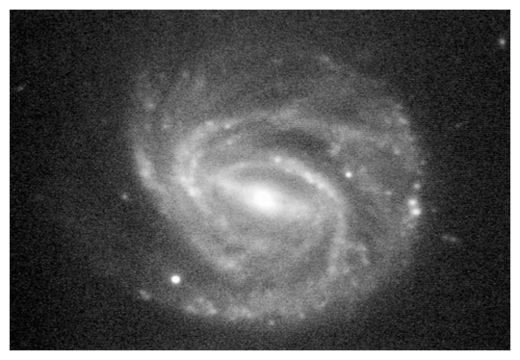
One of these days we might see a supernova. It might seem more correct to say "one of these nights," but a star exploding in our galaxy as a supernova would easily be so bright it would be seen in a blue daytime sky, outshining any star or planet in the night sky.
We are long overdue. Supernovae are very rare, although astronomers say they should occur on the average every few hundred years. The last one seen in the Milky Way Galaxy was in 1680.
A supernova can become so bright - for a brief time- that the star outshines every star in the galaxy. The one in 1680 was not particularly brilliant as seen from Earth, but some have been- notably the great supernova of 1572 in Cassiopeia and another in the year 1054 in Taurus.
Several notable supernovae have been recorded through history, but none in our own galaxy since the early days of the telescope! Much of what we know today about these cosmic catastrophes come from observations of other galaxies.
Distant galaxies generally are so far away we cannot discern individual stars, although large professional observatories have photographed faint stars in nearer galaxies such as the great Andromeda Galaxy, visible to the unaided eye as a hazy patch.
While we wait for the next supernova in our home galaxy to dazzle our eyes, for both professional and amateur backyard-variety astronomers, it is a wonder to see a star within the faint smudge of a far away galaxy, where no star had been seen before.
Some amateur astronomers seriously hunt for them, methodically checking galaxies at the telescope eyepiece or on photos they take, to see if anything new has appeared.
The writer was pleased to see two of these in the early '90s, after learning of them through press reports. From a backyard in White Mills, at the time using a telescope with only a 6-inch-wide mirror, he was able to see the newly appearing stars, both in easily distinguished galaxies, M51 and M82.
Any reader with a small telescope can extend his or her horizons, so much farther than you ever might have expected - millions of light years. With some patience and practice, and a good star chart, you start by learning the constellations, and then picking out some of the brighter deep-sky wonders seen with binoculars, if not by unaided eyes. You can find a faint galaxy or other object such as a star cluster that is plotted on your chart, by carefully "star hopping" starting from some bright star, and moving to fainter stars nearby. With your imagination, you picture your own little "constellations" in the eyepiece, perhaps a triangle of stars, a line or some other geometric shape, to help you slowly move across the sky to the location of your target.
By doing this, you will soon learn the positions of some familiar galaxies or star clusters and can more easily locate them the next time. Once you are familiar with the appearance of a galaxy, which for the most part in a small telescope looks like a fuzzy oval or circle, you will be aware if the next time you look, something is amiss, and a new star has shown up - possibly a supernova.
Not all stars end as a supernova. There are more than one kind, but a typical supernova is the result of a massive star that has collapsed under its own weight. The stellar material hits its neutron core and bounces back. In another type, a dense white dwarf star explodes when enough material from a second, orbiting star, falls into it.
Other stars suddenly appear but are not exploding supernovae; they are any one of several categories of variable stars, that go up an down in output, whether over a period of days or even years or centuries. Time for a new light bulb?
Only certain stars, depending on their mass and makeup, are destined to explode; once they do, they leave behind a nebulous shell of gas, several of which are observable in backyard instruments. Probably the most well-known is the Crab Nebula, M1, in the constellation Taurus, the result of a supernova in the year 1054. Some think it looks like a crab, but in a small telescope it looks more like a baby's bootie. With all our cold scientific data, thank heavens for imagination!
New moon is on Sunday, April 3.
Keep looking up!



Reader Comments
to our Newsletter